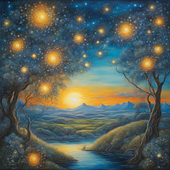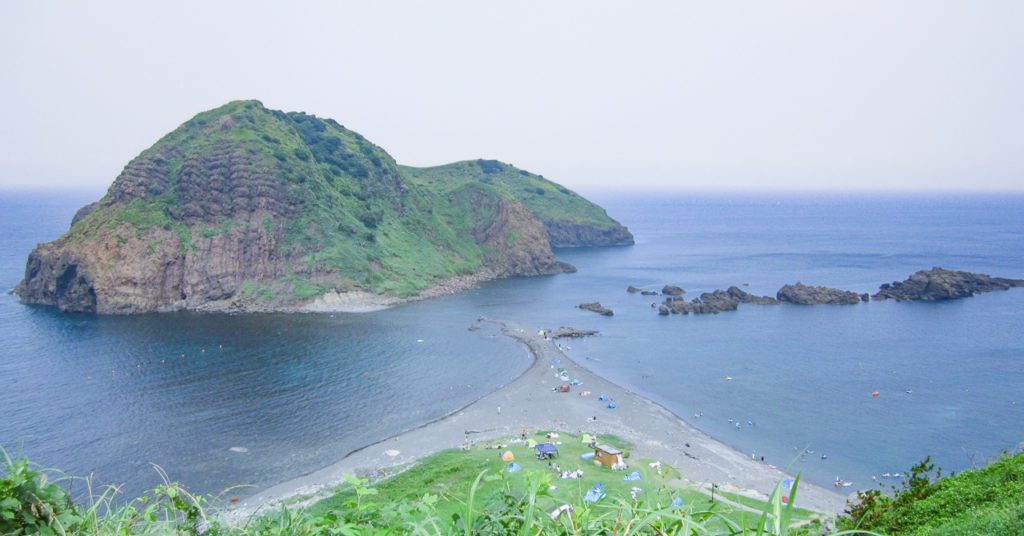
Sado Island
Travel essay
“The people in our town, they died without ever seeing the ocean.”
Strange words to hear on an island. They are spoken by an 80-year-old woman we have met at a bus stop just after arriving at the port of Akadomari on Sado Island. She has the signature stoop of many elderly rice farmers, her torso leaning from her waist at a ninety-degree angle even when she stands. But she seems vigorous for her age and it’s clear her mind is sharp.
The town she speaks of is Hamochi, tucked away in the mountains, less than a day’s hike to the coast.
“My ancestors labored in the fields there for many generations,” she explains. “We didn’t have cars and at the end of a hard day, we never had any reason to walk to the sea.”
I struggle to fathom how a person, let alone a whole community, could live surrounded by water and never set eyes on it. Sado—located on the Sea of Japan off the northern coast of Niigata—is, admittedly, a vast island. Covering some 855 square kilometers, it is the sixth largest island in Japan, following Okinawa.
As we board the bus, the woman tells us to keep our eyes out for crested ibis, perching in the trees around her town. This distinctive bird—with its white crest, red feet and face, and long narrow beak—was at one time thought extinct, until the last seven in the world were found in China’s Shaanxi province. Several dozen have since been reintroduced to Japan— Sado in particular—and with strict regulations on pesticides and chemical fertilizers, they are now in their second-generation.
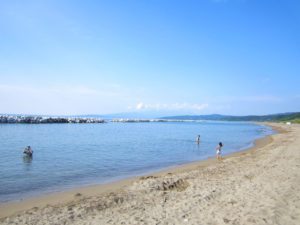 Though, we don’t spot any crested ibises, the ride is a fine introduction to Sado’s coastal scenery. Lush trees spill down the mountains to our right, with the ocean stretching out endlessly on the left, as we pass through town after town of clay-shingled wooden houses, not a Western-style building anywhere.
Though, we don’t spot any crested ibises, the ride is a fine introduction to Sado’s coastal scenery. Lush trees spill down the mountains to our right, with the ocean stretching out endlessly on the left, as we pass through town after town of clay-shingled wooden houses, not a Western-style building anywhere.
After saying farewell to the woman as she gets off, we arrive at a beach called Sobama where we pitch our tents and spend the rest of the day snorkeling.
Next morning, we catch the bus for Sado’s ancient gold and silver mine — Kinzan. On the way, I spot a crested ibis in a tree and call excitedly to my companions, but by the time they look our bus has pulled us away. The glimpse was brief, and no one else was able to confirm it, so I soon begin to doubt my eyes. There is something almost unreal about sighting such a rare creature brought back from the brink.
Soon we arrive at Kinzan, a forested mountain near the west coast. Mining began here in 1601, providing gold for the coins, many minted on Sado itself, that financed the Tokugawa Shogunate (along with rice, another currency in those days). The mine remained active until 1989, when mineral veins finally ran out. Its two shafts have since been converted into a museum that exhibits traditional mining practices in-situ.
The first shaft—Sodayu Tunnel—is a relic of Japan’s pre-industrial Edo Period. We descend a stairwell through a dark passage into the belly of the mountain, where the temperature drops some 10 degrees. Conditions from when the mine was worked, often by women and children, have been preserved, with wooden beams propping up the walls and ceiling to stop cave-ins. In the lantern-lit gloom, placards present historical facts, and humanoid robots reenact the grueling labor: hewing tunnels through solid rock with hammers and chisels; pumping in air to prevent suffocation; and draining the steady accumulation of spring water on alternating 24-hour shifts.
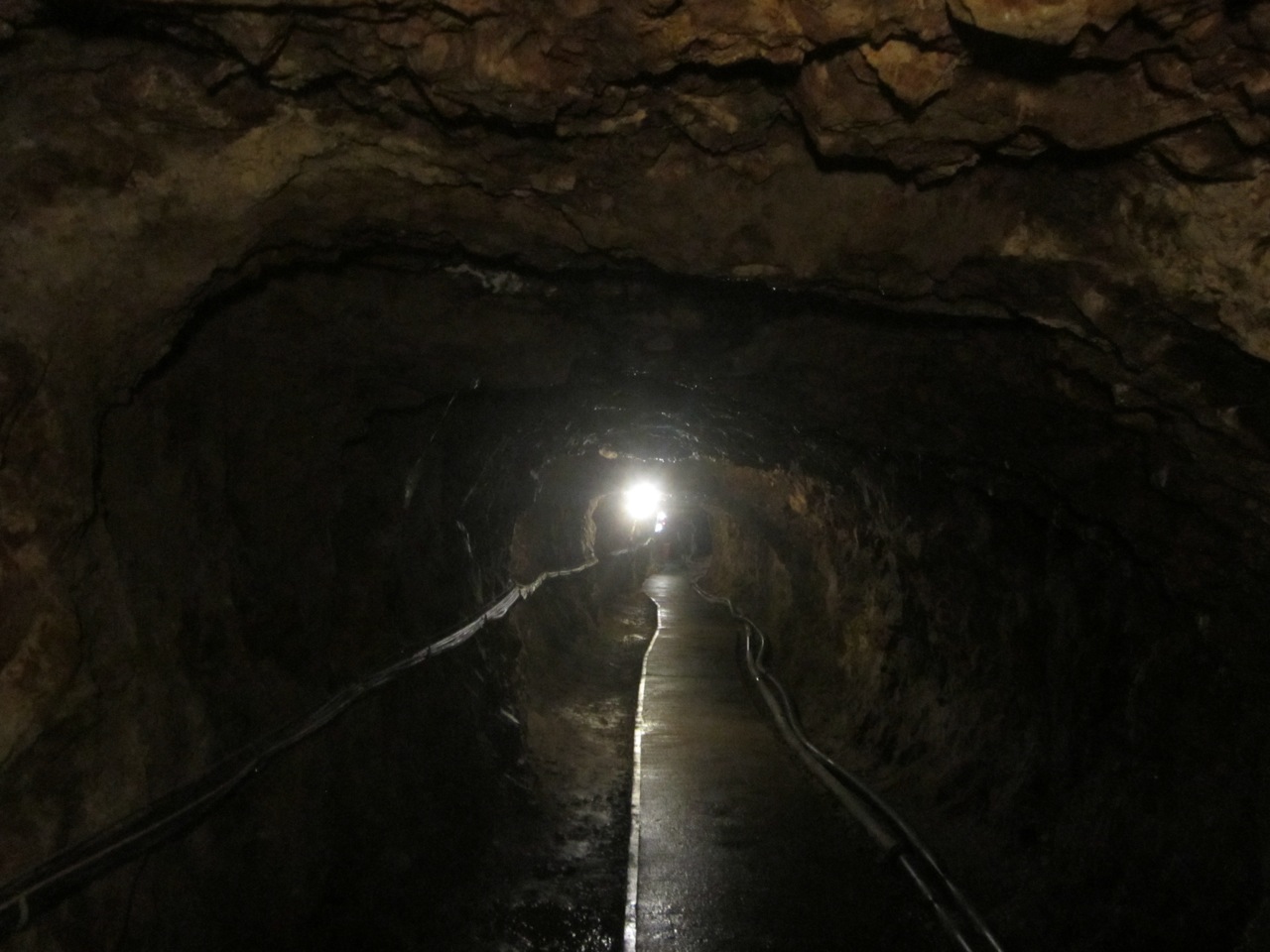
Here and there, we spot so-called “racoon dog holes” (tanuki-ana)—frightfully narrow crawl tunnels dug to search for new veins. The duty of exploring these, a placard explains, was often assigned to young boys.
Although miners were paid relatively well by the standards of the day, life spans were short and the work was so detested that unregistered denizens of distant Edo (present-day Tokyo) often had to be rounded up and hauled here.
The second shaft—Doyu Tunnel—retains its form from the Meiji Era (1868-1912), when mining began anew under Mitsubishi’s management using modern technologies. Rails for electric trolleys that once carried rock and ore run along the floors, punctuated sporadically by red and green traffic signals.
Our tour concludes with a climb up a hill outside to view the peak of Kinzan, which has been split asunder.
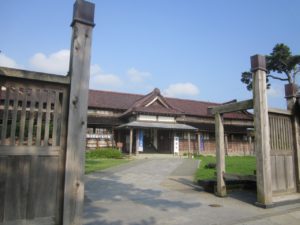
After the museum, we hitchhike to Aikawa, an old town that flourished during the mining era. There we visit Sado Hangamura Art Museum, a repurposed Meiji Era courthouse that a displays an impressive collection of woodblock prints. Most have been carved by island residents, and they depict an array of Sado’s icons: taiko drums, Noh theater, Shinto rituals, the crested ibis, Kinzan, and barrel-boating.
The turning point for our trip comes that evening. As we swim near our new campsite in the bay of Sawata, a local man engages us in conversation. Looking to be in his 60s, he is in good shape and has a rich tan. We think him a bit odd at first, but we’re delighted when he strolls into our campsite at 8 o’clock the next morning and offers to drive us around.
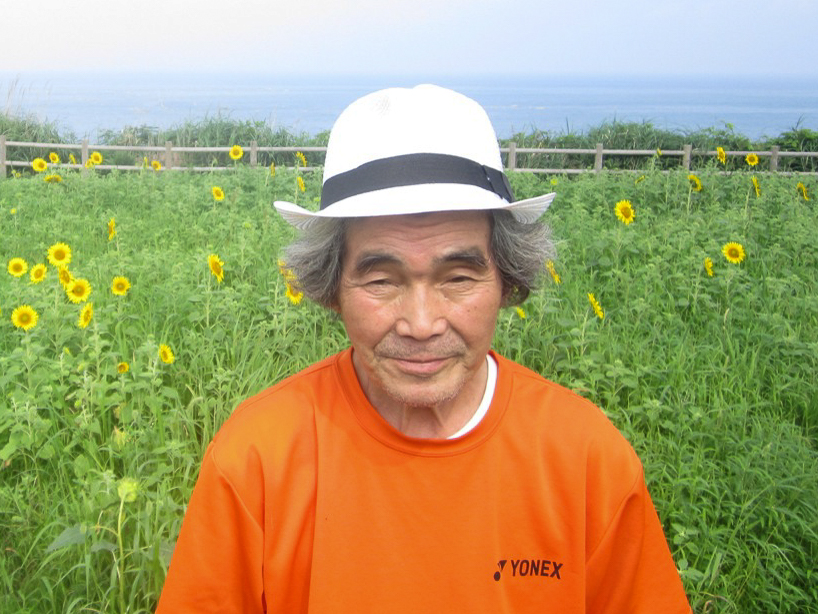
It turns out that he is a retired clothing designer turned painter by the name of Hiroshi Kominamidate. He tells us that he has been up since 4 am, painting and drinking beer, so he will be unable to drive but will direct us to all the must-see destinations if one of us will take the wheel.
We head north along the west coast, making periodic pitstops to procure cans of beer for our guide. These he chugs down with relish while regaling us with tales of his youth.
Our first stop is a cave where Hiroshi says that Nichiren, founder of the Nichiren Sect of Buddhism, performed ascetic practices. This was during his exile on Sado, which served for centuries as the place of banishment for dissidents and the losers of political struggles. Inside the cave, water drips from the ceiling to feed pools on the stone floor. Deeper, a colony of bats huddle together in a clump, shrieking faintly. It has quest for enlightenment written all over it.
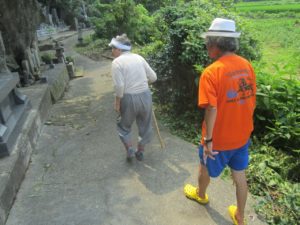 While we’re taking pictures, a farmer woman working in the adjacent rice field approaches and offers to show us another cave that our guide was unaware of. In the dim, we can make out shallow ponds where she urges us to wash our eyes as the water has magical vision-healing properties. We splash the water in our eyes as instructed. My vision is 20/20, but I thought it couldn’t hurt.
While we’re taking pictures, a farmer woman working in the adjacent rice field approaches and offers to show us another cave that our guide was unaware of. In the dim, we can make out shallow ponds where she urges us to wash our eyes as the water has magical vision-healing properties. We splash the water in our eyes as instructed. My vision is 20/20, but I thought it couldn’t hurt.
Driving further along the coast, we drink fresh mountain water at Seisuiji Temple and pass many striking rock formations. Soon we park beside a beach that faces two massive outcrops just offshore. These are named for what they’re said to resemble, Futatsugame, or “two turtles”.
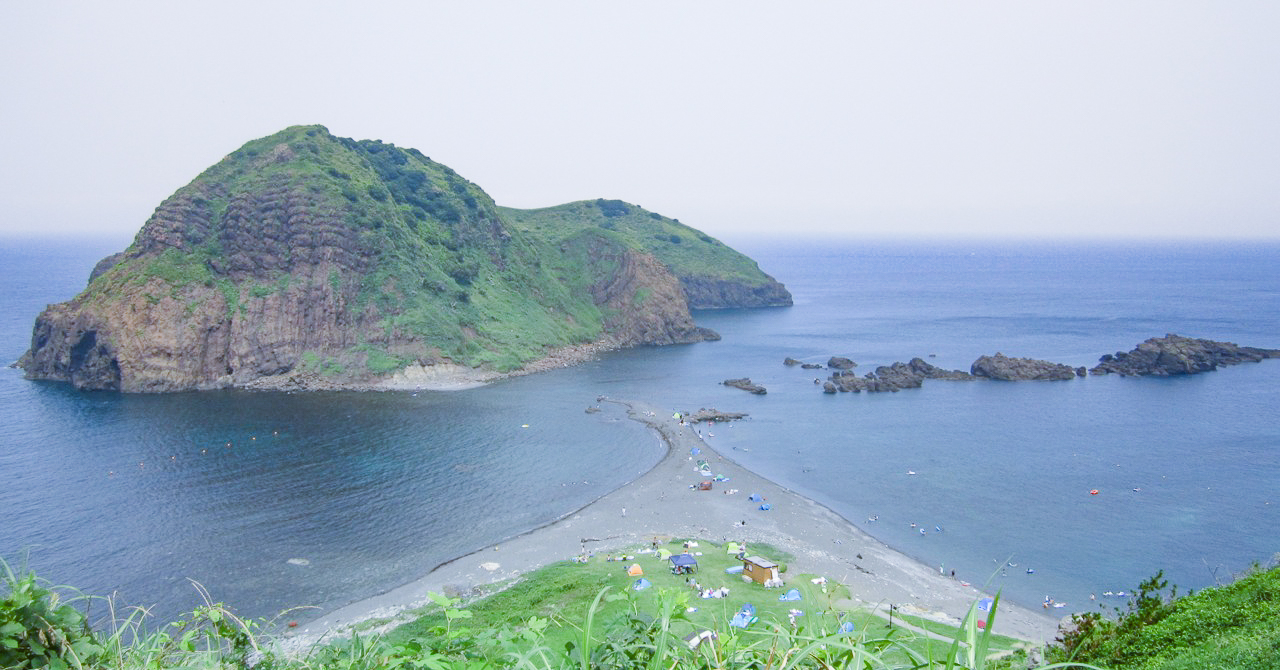
The water is unbelievably clear and we spend two hours snorkeling in a kelp forest. There I spot an octopus, color-changing so skillfully on the ocean floor that I soon lose track of it, and schools of numerous cold water fish.
Afterward, we drive high in the mountains to Sado-Yahiko-Yoneyama Quasi-National Park for a brief walk through an ancient pine forest shrouded in milky fog.
“The forest is fed by the mist,” Hiroshi explains, and proceeds to pick us some raspberries.
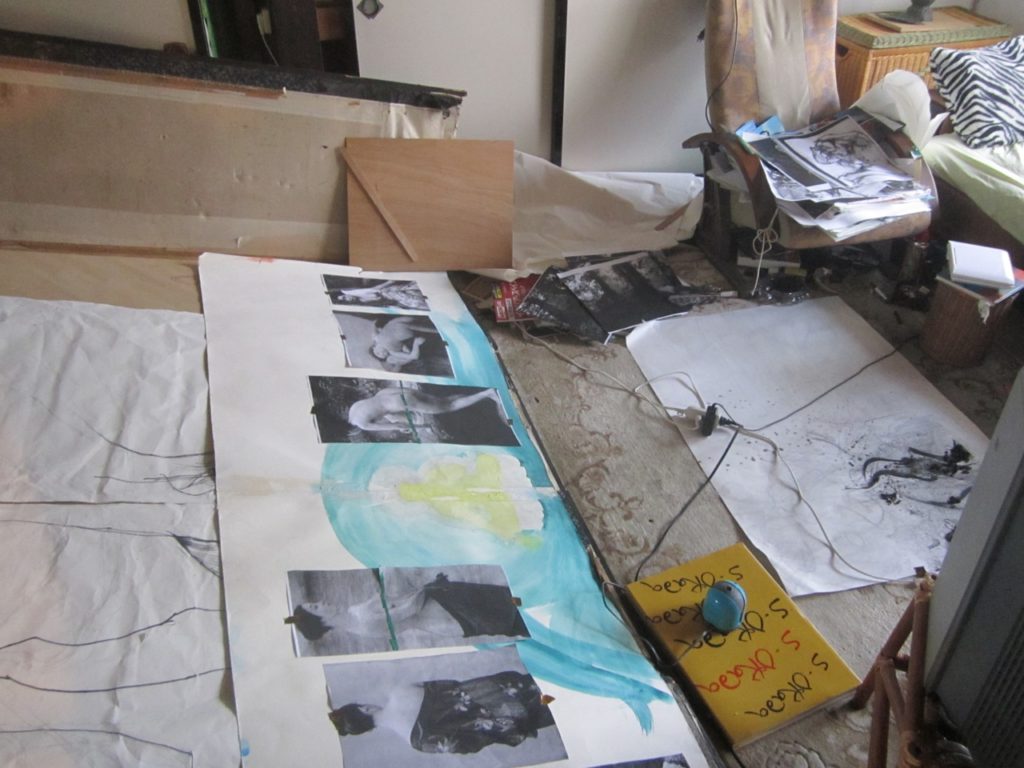
Finally, we stop off briefly at our guide’s house to peruse his paintings — most of them female nudes. After he kindly lets us pick two each as souvenirs, we waste no time getting back in the car and speeding to the ferry, which we board with only minutes to spare.
Though we are grateful for the panoply of adventure and discovery on our three-day trip, I feel like Sado has so much that we barely even touched. Certainly, our fleeting impressions will never compare with the experiences of those who never needed to see the ocean.
Adapted from an essay originally published in The Japan Times
 Eli K.P. William is the author of The Jubilee Cycle trilogy (Skyhorse Publishing), a science fiction trilogy set in a dystopian future Tokyo. He also translates Japanese literature, including the bestselling novel A Man (Crossing) by Keiichiro Hirano, and serves as a writing consultant for a well-known Japanese video game company. His translations, essays, and short stories have appeared in such publications as Granta, The Southern Review, Monkey, and The Malahat Review.
Eli K.P. William is the author of The Jubilee Cycle trilogy (Skyhorse Publishing), a science fiction trilogy set in a dystopian future Tokyo. He also translates Japanese literature, including the bestselling novel A Man (Crossing) by Keiichiro Hirano, and serves as a writing consultant for a well-known Japanese video game company. His translations, essays, and short stories have appeared in such publications as Granta, The Southern Review, Monkey, and The Malahat Review.
More about Eli here.
Follow him on BlueSKy: @elikpwilliam
Or for more essays like this, JOIN ELI’S NEWSLETTER
ALMOST REAL
essays on futurism, philosophy,
speculative fiction, and Japan
by Eli K.P. William
